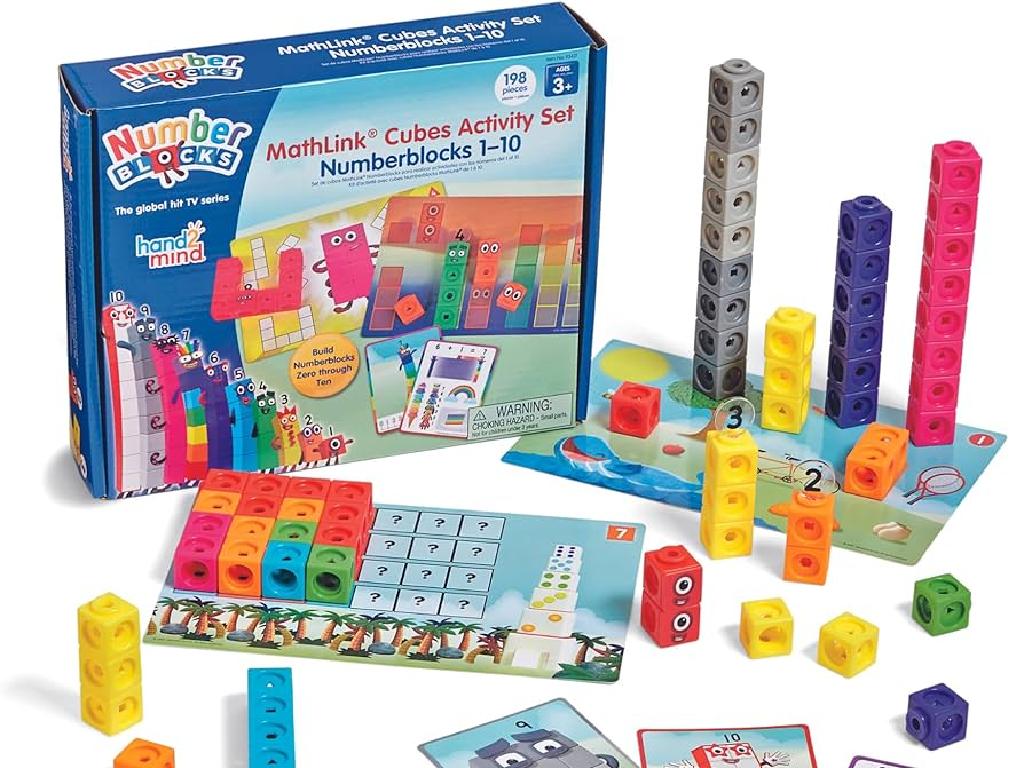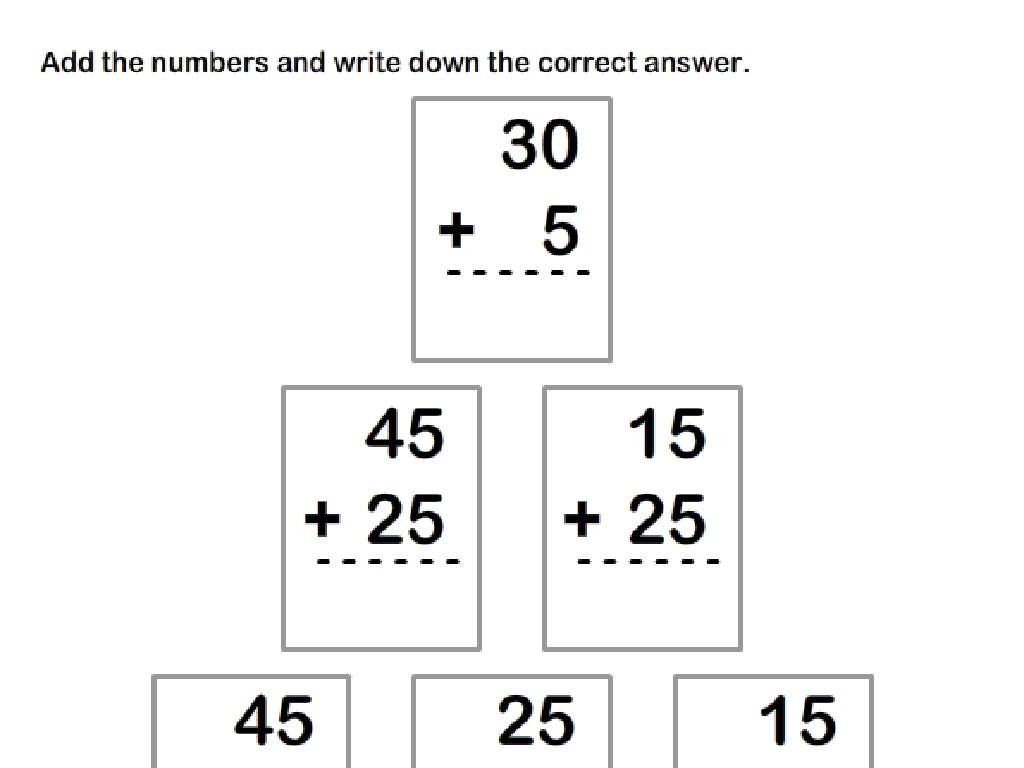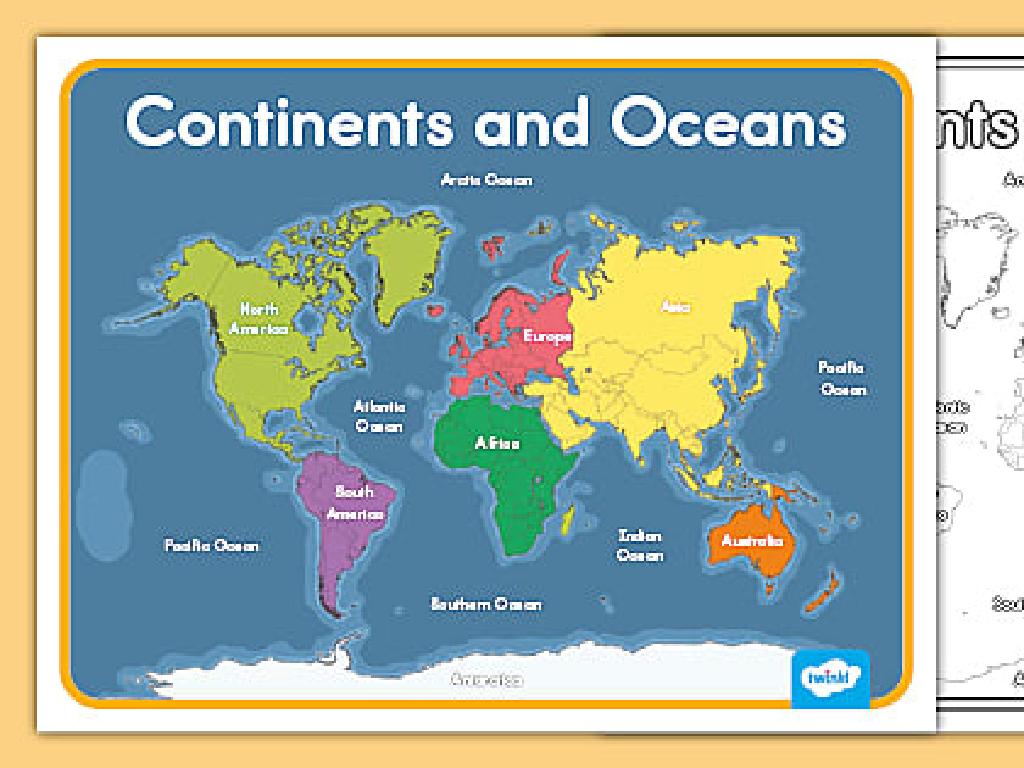Introduction To Adaptations
Subject: Science
Grade: Second grade
Topic: Traits
Please LOG IN to download the presentation. Access is available to registered users only.
View More Content
Welcome to Adaptations!
– Animals survive in many ways
– What does ‘adaptation’ mean?
– Adaptation is how animals change to live better in their environments
– Animals change for their homes
– Examples: Polar bears have thick fur for cold, camels have humps to store fat for the desert
– Adaptations help survival
|
This slide introduces the concept of adaptations to second-grade students. Start by discussing the different places animals live and how they manage to survive in those environments. Ask the students what they think ‘adaptation’ means to gauge their prior knowledge. Explain that adaptation is the process through which animals develop features to survive better in their homes, like thick fur for cold or humps for water storage. Use familiar animals as examples to make the concept relatable. Encourage students to think of other animals and how they might be adapted to their environments.
What is an Adaptation?
– Adaptation: a survival skill
– Helps animals live and thrive
– Adaptations in looks and actions
– Can be physical or behavioral traits
– Example: Polar bear’s thick fur
– Keeps polar bears warm in cold
– Example: Bird’s beak shape
– Different beaks for different foods
|
Adaptations are special features that allow animals and plants to live successfully in their environments. These can be physical adaptations like the color of an animal’s fur, which can help it hide from predators, or behavioral adaptations like birds migrating to warmer areas during winter. For example, a polar bear’s thick fur keeps it warm in the Arctic cold, while a bird’s beak shape can help it find food more efficiently. Encourage students to think of other animals they know and discuss what adaptations these animals have to help them survive. This will help them understand the concept of adaptations and how it applies to different species.
Exploring Animal Adaptations
– What are Physical Adaptations?
– Body features that help animals, like a duck’s webbed feet for swimming.
– Examples of Physical Adaptations
– Ducks have webbed feet, camels have long eyelashes, polar bears have thick fur.
– What are Behavioral Adaptations?
– Actions animals take to live, like birds migrating to stay warm.
– Examples of Behavioral Adaptations
– Birds fly south in winter, bears hibernate, frogs croak to find friends.
|
This slide introduces the concept of adaptations in animals, which are special features or behaviors that help them survive in their environments. Physical adaptations are body parts or features that give an animal an advantage, like webbed feet for swimming or thick fur for cold climates. Behavioral adaptations are things animals do, like migrating or hibernating, to cope with environmental challenges. Use examples that are easy for second graders to understand and relate to, and encourage them to think of other examples they may have seen in nature or books. This will help them grasp the concept of adaptations and how they are essential for survival.
Why Do Animals Adapt?
– Animals adapt to survive
– Each environment is different, so animals need special traits to live there.
– Adaptations help find food
– Like a bear’s sharp claws help it catch fish.
– They protect from danger
– For example, a turtle’s shell protects it from predators.
– Adapt to weather changes
– Polar bears have thick fur to keep warm in the Arctic cold.
|
This slide aims to explain the concept of adaptation in animals to second-grade students. Adaptations are special features that animals have developed over time to survive in their unique environments. These features help animals in various ways, such as finding food, protecting themselves from predators, and coping with different weather conditions. Encourage the students to think of examples of animals they know and discuss why these animals might need to adapt to their environments. This will help them understand the importance of adaptations and how they support the survival of species.
Exploring Animal Adaptations
– Camels have humps for survival
– A camel’s hump stores fat, which turns into energy when food and water are scarce.
– Elephants use trunks in many ways
– An elephant’s trunk helps with breathing, smelling, drinking, and grabbing objects.
|
This slide introduces the concept of animal adaptations by examining the specific functions of a camel’s hump and an elephant’s trunk. Adaptations are special features that allow an animal to live in its environment. The camel’s hump is a great example of an adaptation for living in the desert, where food and water can be hard to find. The elephant’s trunk is a versatile tool, showcasing how adaptations can serve multiple purposes. Encourage students to think about other animals and their unique adaptations. Ask them to consider how these adaptations help the animals survive in their habitats.
Your Turn: Identify Adaptations!
– Observe animal pictures
– Discuss adaptations with a friend
– What special features do the animals have?
– Think why adaptations are helpful
– How do these features help the animal survive?
– Share your thoughts with the class
|
This interactive slide is designed to engage second-grade students in a discussion about animal adaptations. Show them pictures of various animals, such as a polar bear, a camel, and a frog. Encourage them to observe closely and talk with their classmates about the unique features they notice and hypothesize why these adaptations might be beneficial for the animal’s survival. For example, a polar bear’s white fur blends with the snow, helping it hide from predators and prey. After the discussion, bring the class together to share their ideas, fostering a collaborative learning environment. This activity will help students understand the concept of adaptations by relating it to visual examples and peer discussion.
Class Activity: Create Your Own Animal!
– Imagine and draw a unique animal
– Choose a habitat for your animal
– Could be a jungle, ocean, or desert
– Consider what your animal eats
– Is it a plant-eater, meat-eater, or both?
– Think about protection and survival
– Does it have camouflage or sharp claws?
|
This activity is designed to help students apply their knowledge of animal adaptations by creating an animal of their own. Encourage creativity and ensure they consider the key aspects of survival in their chosen habitat: food, shelter, and protection. Provide drawing materials and guide them to think about how their animal’s traits help it thrive. For example, if it lives in the desert, it might need ways to stay cool and find water. After the activity, have students present their animals and discuss the adaptations. This will reinforce their understanding of the concept of adaptations and how they help animals survive.
Conclusion: Adaptations are Amazing!
– Adaptations aid survival
Like a camel’s hump stores fat for desert survival.
– Every adaptation has a purpose
Sharp claws for climbing, bright feathers for attracting mates.
– Adaptations are about looks and actions
Color changes for camouflage, long legs for wading in water.
– Let’s recall some adaptations
|
As we wrap up our lesson on adaptations, it’s important for students to understand that adaptations are special features that help animals live in their unique environments. These can be physical, like the way an animal looks, or behavioral, involving the actions an animal takes to survive. For example, a camel’s hump stores fat, allowing it to go without water for long periods in the desert. Birds may have bright feathers to attract mates or sharp claws for climbing trees. Some animals change color to hide from predators, and others have long legs to help them wade in water. Encourage students to think of other examples and discuss how these adaptations help the animals. This reinforces the concept that every adaptation serves a specific purpose, contributing to the animal’s ability to thrive.
Class Activity: Adaptation Charades
– Play adaptation charades
– Act out animal adaptations
– Pretend you have fins or wings
– Classmates guess the adaptation
– Is it a fish swimming or a bird flying?
– Enjoy and be imaginative
|
This interactive class activity is designed to help students understand the concept of animal adaptations through a fun game of charades. Students will take turns acting out different adaptations without speaking, while their classmates try to guess the adaptation. Teachers should prepare a list of adaptations that students can act out, such as a duck’s webbed feet for swimming, a rabbit’s large ears for hearing, or a turtle’s shell for protection. Encourage students to be creative in their expressions and movements. This activity not only reinforces the lesson on adaptations but also promotes active learning and engagement among students.





